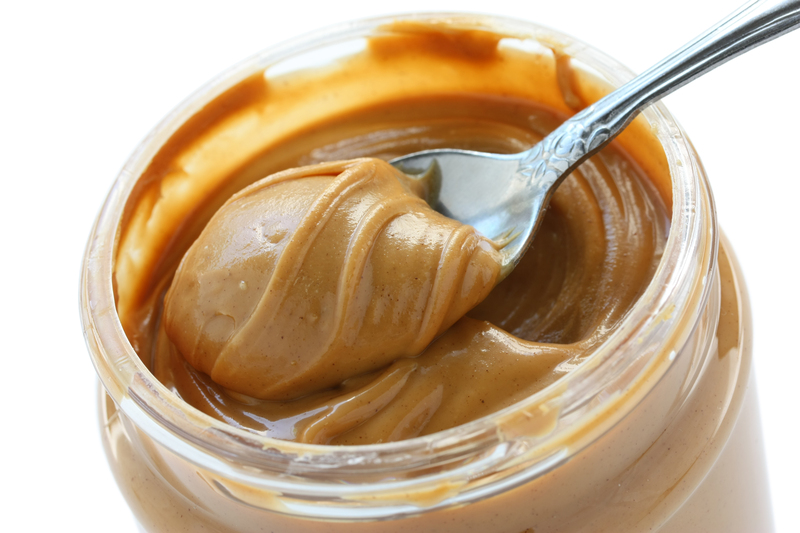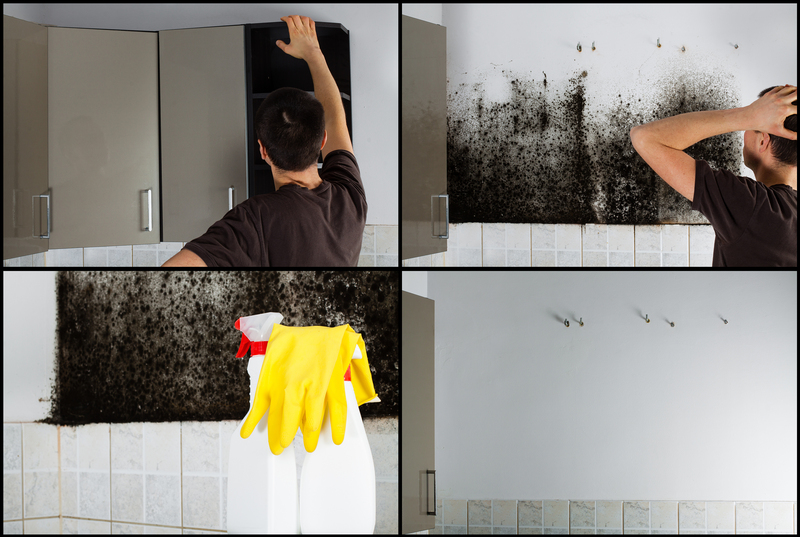Ensure a Cleaner Home with Dust and Allergen Control Techniques
Posted on 25/08/2025
Ensure a Cleaner Home with Dust and Allergen Control Techniques
Living in a clean home goes beyond just appearances. A truly tidy space is also free from invisible threats such as dust particles and allergens that can compromise your family's health. Whether you or your loved ones suffer from allergies, asthma, or simply want fresher indoor air, understanding how to reduce dust and control allergens is essential. This comprehensive guide explores effective strategies, habits, and solutions for dust and allergen control -- transforming your living space into a healthier haven.
Understanding Dust and Allergen Accumulation
To effectively tackle home allergens and dust, it's important to understand where they come from and why they accumulate. Dust is typically a mix of dead skin cells, fabric fibers, pet dander, pollen, and microscopic debris. Common indoor allergens include dust mites, pet hair, mold spores, and pollen tracked in from outside. Poor cleaning habits, clutter, and inadequate ventilation can exacerbate dust build-up and increase allergen concentrations.
Common Sources of Dust and Home Allergens
- Textiles and upholstery: Sofas, carpets, curtains, and bedding collect dust and harbor dust mites.
- Pets: Pets shed fur, dander, and can also carry pollen or mold in from outside.
- Open windows and doors: Outdoor pollen and dust easily enter through gaps and on footwear.
- Ventilation and air conditioning: Dirty filters circulate dust and allergens throughout your home.
- Humidity: High moisture encourages mold growth and dust mite proliferation.

Why Dust and Allergen Control Matters
Allergens in the home are linked to a range of health issues--from mild discomfort, such as sneezing and itchy eyes, to more severe conditions like asthma attacks or eczema flare-ups. Regular allergen and dust control provides these key benefits:
- Healthier respiratory systems
- Fewer allergic reactions
- Improved indoor air quality
- Better sleep quality
- A fresher, cleaner appearance and smell throughout your home
Essential Dust and Allergen Removal Techniques
The following sections detail proven techniques and practical tips for minimizing dust and allergens in every part of your home. By adopting these strategies, you can significantly improve cleanliness and air quality.
1. Implement a Consistent Cleaning Schedule
- Establish daily, weekly, and monthly cleaning tasks to prevent dust build-up.
- Focus on high-traffic areas and spots where dust tends to accumulate, like behind furniture or on ceiling fans.
- Use high-quality cleaning supplies such as microfiber cloths, which lock in dust instead of simply moving it around.
2. Adopt Better Dusting Methods
Dusting might seem straightforward, but using the wrong tools or techniques can disperse allergens into the air. For effective dust removal:
- Use damp microfiber cloths instead of feather dusters or dry rags. Microfiber traps particles efficiently, and dampness prevents dust from becoming airborne.
- Dust from top to bottom so any stray particles fall to surfaces you haven't cleaned yet.
- Clean hard-to-reach places like baseboards, lampshades, and vents regularly.
Tip: Electrostatic dusters also work exceptionally well for grabbing dust without scattering it.
3. Upgrade Your Vacuuming Routine
Vacuuming is a critical step in dust and allergen control. However, not all vacuum cleaners are created equal, and the right technique matters.
- Choose a vacuum with a HEPA filter; these filters trap tiny allergenic particles, preventing them from blowing back into the air.
- Vacuum all carpets, rugs, and upholstered furniture at least twice a week.
- Pay special attention to edges, under furniture, and high-traffic pathways.
- Clean and replace filters regularly to maintain suction and filtration efficiency.
4. Maintain Hard Floors with Care
- Sweep or dust-mop hard surfaces frequently, using electrostatic or microfiber mops.
- Wet-mop floors regularly to pick up what sweeping leaves behind. Water traps dust so it doesn't simply move around.
- Avoid brooms with stiff bristles on hard floors; they tend to kick up more dust into the air.
5. Control Humidity to Prevent Allergy Triggers
High indoor humidity is a breeding ground for mold and dust mites. To manage allergens, keep humidity around 30-50%.
- Use a dehumidifier in damp rooms like basements or bathrooms.
- Ventilate kitchens and bathrooms effectively with exhaust fans.
- Fix leaky pipes promptly to prevent excess moisture and mold growth.
- Monitor humidity with a digital hygrometer for optimal results.
6. Wash Bedding and Textiles Frequently
Bedrooms are among the most significant sources of dust mites and allergen accumulation due to bedding, mattresses, and pillows.
- Wash sheets, pillowcases, and blankets weekly in hot water (at least 130?F/54?C) to kill dust mites and remove allergy triggers.
- Encase pillows and mattresses in allergen-proof covers to create a barrier against mites.
- Launder curtains, throws, and plush toys frequently.
- Avoid excessive bedding and decorative pillows which collect dust unnecessarily.
7. Control Pet-related Allergens
- Bathe and groom pets regularly to reduce shedding and dander.
- Keep pets off beds and upholstered furniture whenever possible.
- Vacuum pet bedding, and wash it often in hot water.
- Designate pet-free zones in the home, especially bedrooms, for allergy-prone individuals.
8. Improve Indoor Air Quality
A cleaner home environment means cleaner air. Poor air quality aggravates breathing difficulties, allergies, and general discomfort.
- Change HVAC or AC filters frequently, opting for those with high MERV or HEPA ratings.
- Consider using air purifiers in heavily used spaces, especially those with HEPA filters.
- Air out your home regularly by opening windows on low-pollen days or using mechanical ventilation systems.
- Control indoor pollution sources by avoiding smoking and minimizing the use of fragranced or chemical-laden cleaning products.
9. Take Preventative Actions
- Minimize clutter, which catches and holds dust.
- Opt for easy-to-clean surfaces. Hardwood floors, leather furniture, and washable blinds accumulate less dust than wall-to-wall carpet, fabric sofas, or thick drapes.
- Place doormats outside and inside entry doors to trap dirt and dust from shoes.
- Implement a "no-shoes" policy indoors to keep outside allergens and dust at bay.
- Regularly declutter shelves, drawers, and cupboards.
Room-by-Room: Targeted Dust and Allergen Control Tips
Different rooms have unique challenges for fighting dust and allergens. Here are focused suggestions for each area:
Living Room
- Vacuum sofas and armchairs weekly.
- Use washable slipcovers for easy cleaning.
- Keep houseplants dusted and check for mold on soil.
- Use fewer decorative pillows and throws.
Bedrooms
- Use allergen-proof mattress and pillow covers.
- Keep clothes in drawers or closed closets.
- Minimize soft toys or choose washable options.
Kitchen
- Wipe down surfaces daily to prevent dust and crumbs accumulation.
- Clean behind and beneath appliances regularly.
- Check for leaks under sinks to avoid mold.
Bathrooms
- Use an exhaust fan during and after showers to reduce humidity.
- Wipe wet surfaces and tiles to prevent mold growth.
Basement or Attic
- Store items in sealed plastic containers to keep out dust and pests.
- Run a dehumidifier if necessary.
- Inspect and clean vents and air ducts frequently.
Natural and Non-Toxic Allergen Control Solutions
Many commercial cleaning agents contain chemicals that can be irritating to sensitive individuals. Try these natural approaches for a cleaner, healthier home:
- Use diluted vinegar and water for all-purpose cleaning (avoid on natural stone).
- Clean glass with a solution of water, vinegar, and a drop of dish soap.
- Baking soda works as a deodorizer and abrasive for sinks, tubs, and tiles.
- Lemon juice has antibacterial properties and leaves a fresh scent.
- HEPA-filtered vacuums and air purifiers are chemical-free air quality boosters.
Tip: Avoid air fresheners or scented candles that release potentially harmful chemicals; opt for fresh air or simmer pots with herbs instead.
Seasonal Strategies for Dust and Allergen Prevention
Dust and allergens vary throughout the year. Adjust your cleaning habits to minimize seasonal impacts:
- Spring and Summer: Pollen counts are higher; keep windows closed on windy days, use air conditioning, and shower before bed to wash off pollen.
- Autumn: Rake leaves promptly, and clean gutters to prevent mold build-up. Get heating systems serviced and change filters before use.
- Winter: Humidity tends to drop. Use humidifiers cautiously to avoid mold, and stay consistent with dusting during months spent indoors.

When to Seek Professional Help
Certain situations may call for expert intervention. Consider professional services if you encounter:
- Persistent mold or mildew problems. A professional can assess and address structural or HVAC issues causing excess moisture.
- Severe allergies or unexplained health symptoms. Allergists can test your indoor air for mold, dust mite, or other allergen levels.
- Major renovation or cleaning projects. Professional deep cleaners can tackle dust and debris after construction or moving.
Conclusion: Your Path to a Dust-Free, Allergen-Reduced Home
Ensuring a cleaner home requires more than occasional tidying--it demands a dedicated approach to dust control and allergen reduction techniques. With these proactive, science-backed steps, you can dramatically improve your family's comfort and health. By adopting regular cleaning routines, embracing smart habits, choosing the right tools, and staying vigilant about prevention, you'll create a living environment that's not only tidy but also supports wellness and peace of mind.
Remember: Consistency is key. Every effort, no matter how small, makes a cumulative difference. Enjoy the benefits of a cleaner, fresher, and more allergy-friendly home--your family and guests will thank you!




